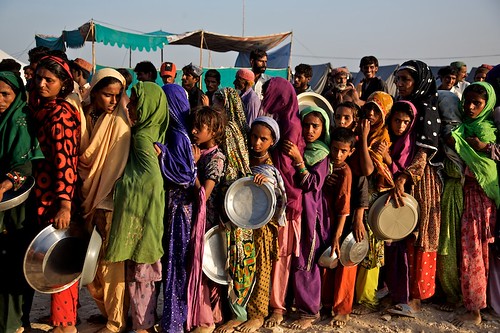by Mysbah Balagamwala
Friday, 31 October 2014
Shifting Norms
Friday, 10 October 2014
“The black spot on the radiant face of Islam”: Muslim Family Laws Ordinances 1961
by Ayesha Khan
 |
| Supreme Court of Pakistan by ImposterTV |
Monday, 29 September 2014
Challenges of a different kind - the role of food prices in the lives of the poorest in Pakistan
by Mysbah Balagamwala and Haris Gazdar
Countries like Pakistan always appear at the global stage to
be battling big challenges such as political crises, conflicts and disasters. But the picture remains incomplete without
seeing challenges of a different kind that ordinary people, particularly the
poorest, face on a daily basis. Research
conducted in Pakistan, alongside nine other developing countries, for the Life
in a Time of Food Price Volatility project provides just such a perspective. Qualitative research was carried out by the Collective for Social Science Research
in 2012 and 2013 in
a cluster of villages in Dadu district and in an urban working-class
neighbourhood in Karachi to explore how rising food prices were affecting the
poor. Three important themes emerged from our research in Pakistan which helps understand ways in which food inflation
impacts the poor and the vulnerable.
Labels:
food security,
Karachi,
vulnerability
Wednesday, 10 September 2014
Flood 2014 – Some Lessons from 2010
by Haris Gazdar
 |
| Flooding in Punjab Province, Pakistan from 2010. UN Photo/Evan Schneider |
On 6th September the Flood Forecasting Division
(FFD) of the Pakistan Meteorological
Department reported ‘Exceptionally High Flood” in Chenab at Khanki and
Jhelum at Rasul. Both rivers had already
inundated large swathes of the floodplains and hundreds of villages by 8th
September when the FFD issued warnings of a second peak over the coming 24 to
48 hours at Trimmu where these two flows meet.
Panjnad braces itself as I write and the Alipur and Jatoi tehsils of
Muzaffargarh district which bore the brunt of the 2010 Indus flood in Punjab are
under threat. The command areas of
Guddu, Sukkur and Kotri barrages – virtually all of the lower Indus floodplains
in Sindh wait. It is already a big flood and is likely to get only bigger.
Wednesday, 9 July 2014
Scaling up Food Fortification in Pakistan: A Feasable Option
by Samar Zuberi
A recent food fortification scoping study endorses food
fortification strategies in Pakistan. The report was commissioned
by DFID Pakistan and conducted by MQSUN. Local analysis on effective means to
address micronutrient undernourishment or ‘hidden hunger’ is much needed. Over
half of Pakistan’s population of children under 5 suffer from anaemia and
vitamin A deficiency and 39% are zinc deficient. Half of non-pregnant mothers
are anaemic, and 42% are deficient in vitamin A and, the same percentage are
deficient in zinc (NNS 2011).
 |
| Photo Credit: Aga Khan University – Farheen Ayub Khan |
Tuesday, 13 May 2014
The beginning of a dialogue: Responsive agriculture-nutrition research
by Samar Zuberi
How can agriculture and food-related
policies and interventions be better designed to improve nutrition outcomes,
particularly for young women and girls? Dialogue around this question was
started at a workshop hosted by the Collective for Social Science Research /
Leveraging Agriculture for Nutrition in South Asia (LANSA) on 15 April in
Karachi. The workshop brought together diverse stakeholders in agriculture and
nutrition including senior officials from provincial governments, academic
researchers, representatives of international development partners, and civil
society organizations and activists.
Friday, 19 July 2013
Considering fragility: A disconnect between agriculture and nutrition

How can agriculture contribute more to
improving nutrition in countries like Pakistan (as well as others in South
Asia) where the sector continues to employ a large proportion of the workforce,
even while its contribution to national income undergoes decline? To find
answers to this question is the main objective of the Research Programme
Consortium Leveraging Agriculture for Nutrition in South Asia (LANSA).
The latest IDS Bulletin which focuses on nutrition in
Pakistan provided the perfect opportunity of showcasing emerging LANSA work on
the country. The evidence paper on Pakistan which I co-authored
with my colleague Mysbah Balagamwala at the Collective for Social Science
Research reviews existing evidence on the pathways and disconnects between
agriculture and nutrition using a framework developed for India by the research
programme TANDI (Tackling the Agriculture-Nutrition Disconnect in India). A
piece written on the article in the IDS Bulletin can be found here.
Subscribe to:
Posts (Atom)





